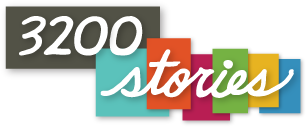Yom Hashoah began last night and continued through today. It is the day we commemorate the Holocaust, or Shoah, in Israeli parlance. The Shoah is one piece of a history in which others have sought to destroy (or at least disperse) the Jewish people. Jerusalem has the same history. It has been conquered, destroyed and rebuilt thirty times. We talked about Jerusalem and Israel as we entered the old city through the Zion Gate. We debated the meaning of the word Israel...some see it as meaning 'struggle'; others read it as 'straight to G-d.'
This is what Judaism is: a continuous debate about what it means to be Jewish.

We passed by a mosaic map of Jerusalem on the way to the Jewish Quarter. It is an enlargement of part of an ancient map from an ancient place that shows Jerusalem as the center of the map -- the center of the world for at least three major religions. We stopped on the Cardo, a road built by Hadrian during the Roman occupation. Jews did not step on the Cardo then because they had been cast out of Jerusalem. Today, the Roman Empire has fallen and Jews have closed the circle -- standing now on the same stones from which they were once banned.
We continued to the Western Wall. This wall is not (as many of us were taught) the Western wall of the second temple. That temple was completely destroyed. We pray now at the wall that Herod built on the western side of the Temple Mount. We arrived just at 10 a.m. and stood in silence, with the rest of the country, as a siren sounded to commemorate the six million Jews lost in the Shoah.

I am not Jewish nor religious and had not been to Jerusalem before. But I knew of the wall. I had packed in my suitcase notes from the children and teachers and staff of the JCCSF preschool and I pressed the notes into the cracks of wall. I put my hand to the stones and knew that someone else, someone I did not know and would never know, had also put their hand there. This is a place of reflection, and I reflected on the people who have come here for thousands of years to reflect as I was doing.
I believe that this wall is as much a reflection of the story of the world as it is a story of the Jewish people.
We continued through the bustling Muslim quarter and into the Christian quarter, to the Queen Helen Orthodox church. We learned about the bond of Christianity to Jerusalem and of the schisms that fracture the church itself. We stood in the courtyard outside the Ethiopian Church and heard the Muslim call to prayer, while standing by the Dome of the Chapel of the Finding of the Cross, built on the rock that is the center of Jewish history. We felt the layers of history and fractious coexistence of the diverse peoples of Jerusalem.
We journeyed on to Yad Vashem. Yad Vashem is, quite literally, a place to memorialize -- a place to learn and tell the story of the Shoah and return names to the fallen.
As a human, I feel both compassion and confusion. I do not understand how the world could have let this happen, how nobody stepped up earlier. This makes me think about what ideals and causes I am standing up for today. It makes me to want to ask you what you are standing up for.
Feature photo of the Yom Ha'Shoah observance at the Kotel by Chris Howell.

